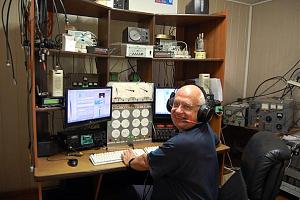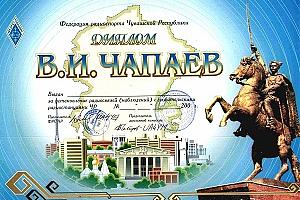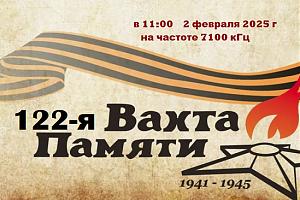ZCZC AP52 QST de W1AW Propagation Forecast Bulletin 52 ARLP052 >From Tad Cook, K7VVV Seattle, WA December 29, 2000 To all radio amateurs
SB PROP ARL ARLP052 ARLP052 Propagation de K7VVV
Average solar flux was down by a tiny amount this week, declining by a little over three points. Average sunspot numbers were off by over 26 points since last week. This bulletin is written just a few days shy of the end of the year, and it looks like the average sunspot number for December will be about the same as for August. The three months in between have been about 30 points lower on average. Average solar flux will be just a few points lower than last month.
The week has been quiet, with very stable conditions on every day except December 23, when unsettled conditions yielded planetary K indices of four and five and a planetary A index of 20. Higher latitude conditions were not much worse, with Alaska's College A index at 22. Mid-latitude A and K indices were quite stable.
The current forecast calls for stable geomagnetic conditions until January 4-6, when they may become unsettled with planetary A indices of 12 to 15. The solar flux outlook for Friday through Tuesday is 185 for December 29-31, 175 for Monday and 170 for Tuesday. Solar flux is expected to bottom out near 140 around January 5, then reach the next peak around January 13-17.
KF6ROX wrote to ask about noisy HF band conditions he has observed when the K index indicates stable geomagnetic conditions. He wrote: ''Today (about 0220 GMT on the 29th) the noise level on 20 meters is high, stations which usually show up about 20 over S9 are not heard well above the noise. The noise is at least two S units higher than normal.'' He wonders how this can be, since the planetary K index at that time was one?
I noticed that Herb is in San Diego, and the weather there is currently quite warm for December (more like summer in Seattle) and some areas have had gusty winds. In fact, a relative who lives about 140 miles northwest of Herb, also near the coast, wrote to me about blustery Santa Ana winds. Could warm weather and wind produce noisy conditions that make 20 meters sound like a K index of four or five?
Sun watchers and anyone with an interest in astronomy or space weather will want to check out the Windows to the Universe web site from the University of Michigan at www.windows.ucar.edu.
This is the last bulletin of the millennium, the century and the decade (unless you observed the more dramatic rollover from 1999 to 2000 as the end or the beginning) but the data for the final few days of this year are not in yet. Happy new year to all, and in next week's bulletin we should have some averaged solar numbers to look at.
Sunspot numbers for December 21 through 27 were 161, 164, 130, 155, 164, 189 and 171 with a mean of 162. 10.7 cm flux was 194.5, 190, 190.9, 193, 187, 188.8 and 187.6, with a mean of 190.3, and estimated planetary A indices were 5, 7, 20, 5, 6, 4 and 7 with a mean of 7.7. NNNN /EX
* Origin: ---=== RA9LO Station at MO27SC ===--- (2:5077/39) -------------------------------------------------------------------
Alexander
RZ6HGG Stavropol E-mail:rz6hgg@skiftel.ru FidoNet: 2:5064/11.30 1 января 2001 г. 8:08:48

 1532
1532





